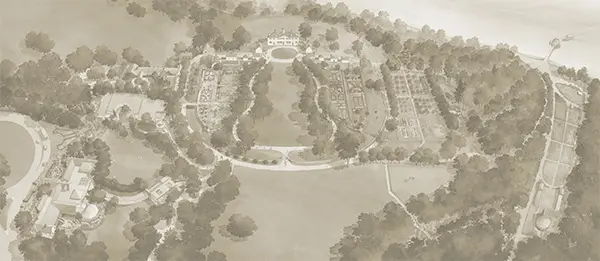One of the largest native trees in North America, the tulip poplar can reach heights of 150 feet in nature. It is actually a member of the magnolia family, and named for its distinct tulip-shaped leaves and flowers. These showy, goblet-shaped, orange-yellow-green flowers appear in late spring after the leaves, although on a mature specimen they can be hard to see.
Latin Name
Liriodendron tulipifera
Family
Magnoliaceae
Also Known As
Tulip tree White poplar Whitewood
Type of Plant
Seasons
Specifications
Uses
Sunlight Exposure
Attracted Wildlife
Colors
Native Range
Deciduous forests of Eastern US
History
Washington recorded in his diary on January 12, 1785 that he "Road to my Mill Swamp, where my Dogue run hands were at work & to other places in search of the sort of Trees I shall want for my walks, groves, & Wildernesses." Among those trees were the tulip poplars that are located in the Bowling Green just outside the Upper and Lower Garden gates, which he found in the area that is now the Pioneer Farmer site.
Other Details
Planted at Mount Vernon


Hardiness Zones










Average annual extreme minimum temperature 1976-2005









Bartlett Tree Expert Company has been working with Mount Vernon Estate since 2011 providing expert arboricultural care and GPS mapping for the estate’s historic trees, as well as support from their research facility. Mount Vernon is proud to partner with Bartlett Tree Experts and appreciates their sponsorship of George Washington’s Mount Vernon Plant Finder App.
Bring Washington's Garden Home
Purchase our historic seeds, collected from plants grown at Mount Vernon and plant them in your own garden.
Shop Now

